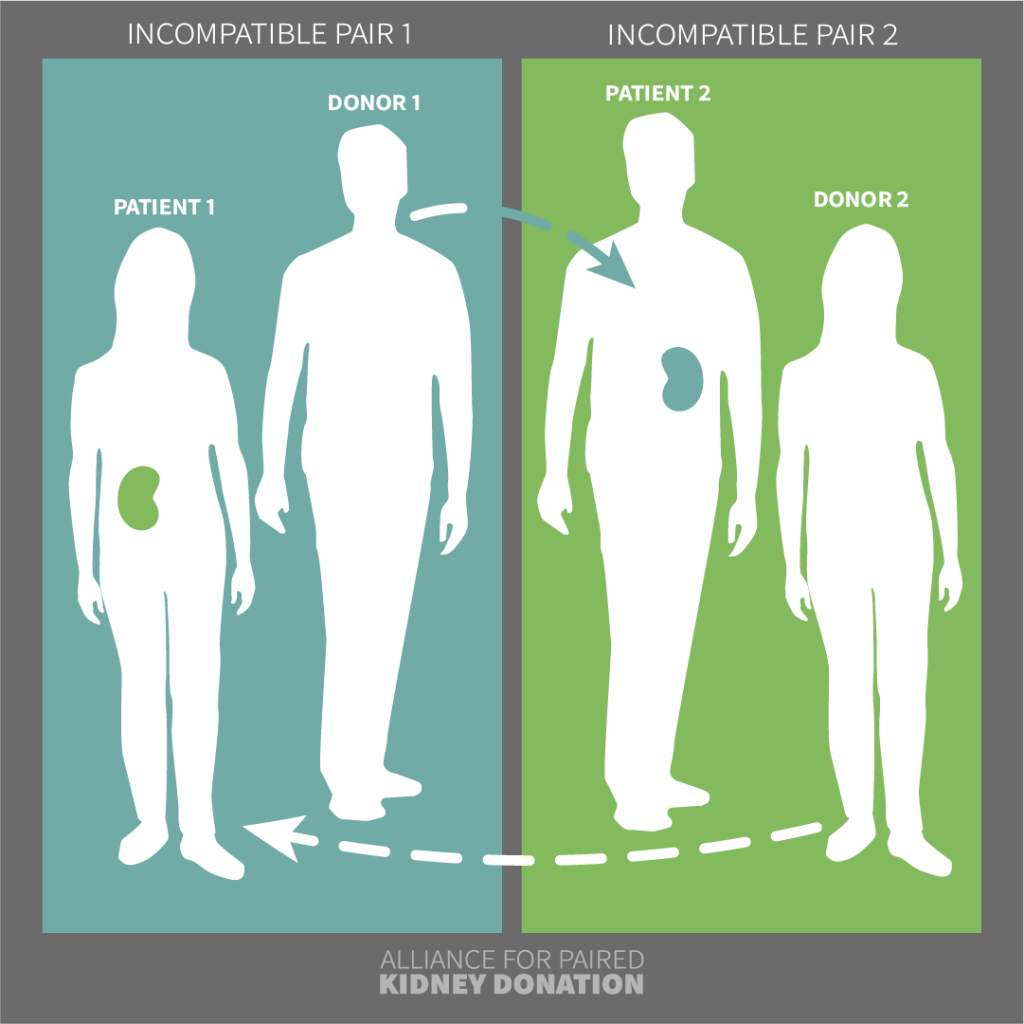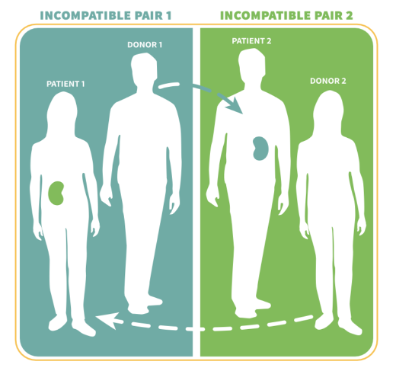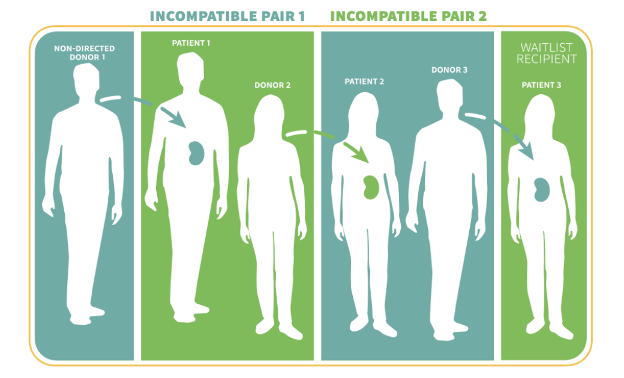When kidney disease leads to kidney failure, a transplant may be the best option. And when a patient needs a new kidney, organ donation provides a way for them to receive one and live a normal and healthy life afterward.
A new kidney can come from a living donor or a deceased donor. This kidney must meet matching criteria to reduce the chance of rejection and ensure the organ remains healthy for years to come.
Often, a family member or friend is willing to donate their kidney to their loved one. However, it’s not uncommon for their kidney to better match a different patient. When a patient and willing donor do not match, they are called an incompatible pair.
This is where paired kidney donation can help the patient find the best match possible. The incompatible pair is tested, and the paired donation process begins:
- Patient (1) and donor (1) are entered into the kidney matching software
- Patient (2) and donor (2) are also entered into the kidney matching software
- It is determined that donor (1) is a good match for patient (2), and donor (2) is a good match for patient (1)
- Donor (1) donates their kidney to patient (2)
- Donor (2) donates their kidney to patient (1)
Through paired kidney donation, two patients can receive new kidneys. Without it, both may stay on the waitlist and possibly never find a good match.
Paired Donation Chains
Paired kidney donation can also work by creating what are known as paired donation chains.
A donation chain can begin with a kidney from a non-directed donor. This is a donor (living or deceased) that is not donating on behalf of a designated patient.
These paired kidney donation chains allow for three or more patients to receive a kidney at once:
- Patients (1), (2) and (3) are entered into the kidney matching software along with donors (1), (2) and (3)
- The non-directed donor (1) donates to patient (1)
- Donor (2) donates to patient (2)
- Donor (3) then donates to patient (3) – likely an individual from the national kidney transplant waitlist
Now, three patients have new kidneys.
Paired donation chains can help make the donation process more efficient by:
- Providing kidney transplants for three or more patients at a time
- Using a deceased donor’s kidney to help complete a paired donation chain
- Allowing different patients across long distances to participate in the same donation chain
Saving more lives
Paired kidney donation has helped save more lives than ever before. The process helps provide hope to those waiting by taking patients off the waiting list.
At the Alliance for Paired Kidney Donation, our innovative software finds matches for paired donation transplants. APKD facilitated the first non-simultaneous extended altruistic donor chain in 2007, with more than 35 additional chains to follow. Our network of transplant center partners is constantly growing; our software performs match runs each day as new pairs and donors are added.
Learn more about paired donation and our lifesaving mission here.



